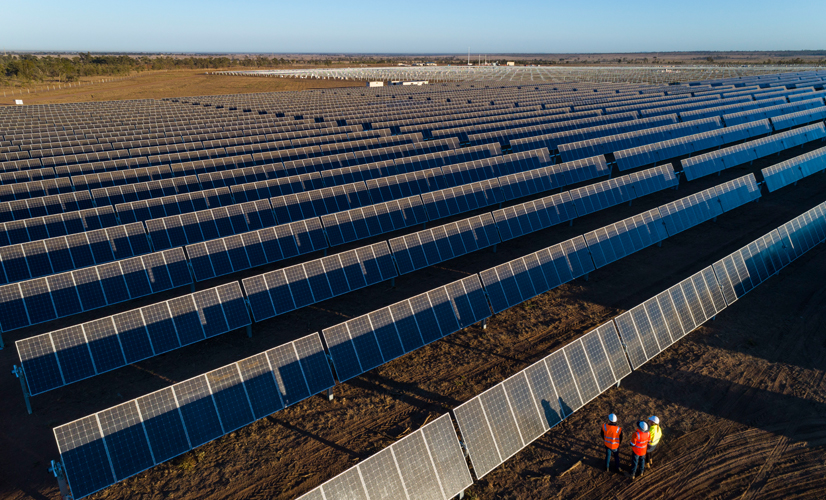It appears The Sunshine State is a case of nominative determinism, because Queensland (QLD) is on the fast track to a renewable recovery. Today, the QLD Government has thrown open the registrations of interest period on its new Renewable Energy Zones (REZs) in southern, central, and northern Queensland.
For two weeks potential renewable energy generators and storage projects can throw their cards on the table and see whose hands have the greenest thumbs.
Premier Annastacia Palaszczuk told Parliament that “Queensland has an economic plan for post-Covid-19 recovery and affordable, reliable energy supply underpins that plan. That plan includes investing in traditional infrastructure and supporting the renewables industry because that supports jobs.”
The firm statement is a continuance of weeks of prudent and authoritative policy. Indeed the opening of the REZs for proposals of interest comes only weeks after the Palaszczuk Government committed $145 million for the projects, and mere days after the QLD Treasurer announced the Government’s $500 million Renewable Energy Fund (REF) for state-owned energy corporations to invest in commercial renewable energy projects and infrastructure.
“These zones will coordinate and foster renewable development in the most suitable areas of Queensland by supporting the delivery of transmission infrastructure,” said the Premier, whose Energy Minister, Anthony Lynham, encouraged all “renewable generators, including wind, solar and green hydro, as well as renewable storage projects to come forward and show how they could play a role in Queensland renewable revolution.”
Of course, QLD’s renewables revolution once again emphasises how state governments are having to forge the future alone, with the Federal Government ditching work for its disreputable friends.
Indeed, the REF announcement came seven long months after QLD Deputy Premier Jackie Trad addressed a letter to Prime Minister Scott Morrison calling for more renewable investment and Federal government backing to help create and support more jobs in more industries. Since then, the Covid-19 pandemic has brought the economy wheezing to its knees, and still the Federal Government has failed to respond to QLD’s call. Thankfully, QLD has learned its lesson when it comes to the Morrison Government – if you want something done right, you have to do it yourself.
Of course, in terms of REZs QLD is following in the footsteps of New South Wales (something I would never say to a Queenslander’s face). In a Ministerial Forum hosted by the Clean Energy Council (CEC) in July 2020, QLD Energy Minister Anthony Lynham said that as QLD seeks to recover and revive the state’s economy against the global economic headwinds post-Covid-19, “renewable energy will be a strength.”
Lynham said that Queensland is watching NSW “with interest,” as regards the success of its REZs. In late June 2020, the NSW Government’s plan to deliver a 3 GW REZ in the state’s Central-West was met with overwhelming investor interest and project proposals valued at $38 billion.
It is great for NSW, said Lynham, “but it (REZs) has been firmly on our radar for some time. So watch this space when it comes to renewable energy zones.” Well, it turns out “this space” was worth watching because Lynham says the REF “will complement our $145 million commitment to establish three renewable energy zones to foster jobs and growth in regional Queensland.”
Smart Energy Council (SEC) Chief Executive John Grimes, who has this week been extraordinarily busy with the Smart Energy Conference and Exhibition, said that REZs “are the stepping stones to 50% renewables. These are exactly the sorts of initiatives that are needed to turn the Sunshine State into the Solar State.”
Grimes went on to laud the Palaszczuk Government for its “leadership in embracing renewables, unlocking investment, delivering jobs in regional communities and building new industries.”
REZ Future
Lynham, who announced yesterday that he will not be contesting his seat in the next election, said that the exact scale, location, and timing of potentially state-funded infrastructure and developments in regards to the REZs would depend on the responses provided.
I will not be recontesting the seat of Stafford at the upcoming election. It has been an honour to serve as a @QLDLabor MP. As I told Parliament, I cannot maintain my medical registration & give 100% to this job. And the people of Stafford & Queensland deserve 100% . #qldpol pic.twitter.com/PmYXujz0mn
— Dr Anthony Lynham (@DrAnthonyLynham) September 10, 2020
“With the right planning,” continued Lynham, “these zones will capitalise on existing projects, make the most of projects already in the pipeline and attract new investment. Through the Renewable Energy Fund we’re going to get more projects through the vital investment decision phase, and with the zones we’re going to help ensure those projects are working together to deliver a series of connected commercial and industrial power hubs across the state.”
Registrations of interest for the REZs can be made here until September 25.
This content is protected by copyright and may not be reused. If you want to cooperate with us and would like to reuse some of our content, please contact: editors@pv-magazine.com.









By submitting this form you agree to pv magazine using your data for the purposes of publishing your comment.
Your personal data will only be disclosed or otherwise transmitted to third parties for the purposes of spam filtering or if this is necessary for technical maintenance of the website. Any other transfer to third parties will not take place unless this is justified on the basis of applicable data protection regulations or if pv magazine is legally obliged to do so.
You may revoke this consent at any time with effect for the future, in which case your personal data will be deleted immediately. Otherwise, your data will be deleted if pv magazine has processed your request or the purpose of data storage is fulfilled.
Further information on data privacy can be found in our Data Protection Policy.